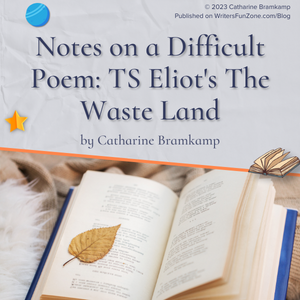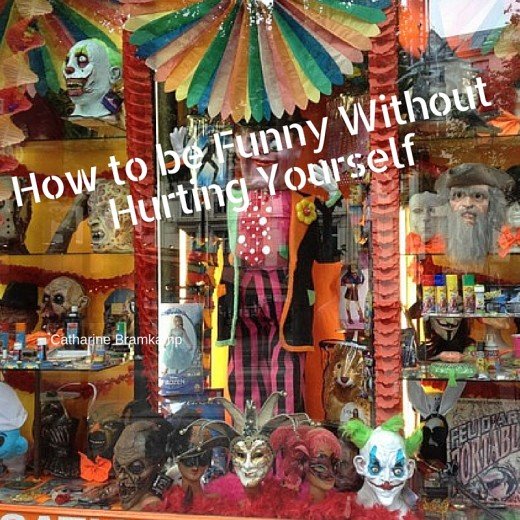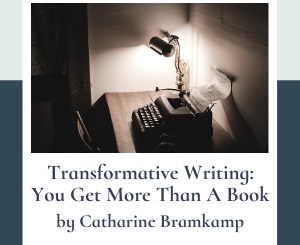Notes on a Difficult Poem: TS Eliot’s The Waste Land by Catharine Bramkamp
 Let’s welcome back monthly columnist Catharine Bramkamp as she shares with us “Notes on a Difficult Poem: TS Eliot’s The Waste Land.” Enjoy!
Let’s welcome back monthly columnist Catharine Bramkamp as she shares with us “Notes on a Difficult Poem: TS Eliot’s The Waste Land.” Enjoy!
***
This year I celebrated the (roughly) 100 year anniversary of TS Eliot’s poem The Waste Land.
I cheerfully waded through the weeds (and the footnotes and the criticisms) of TS Eliot’s most famous work, specifically trying to understand a little more about the process of becoming a famous poem and why a poet like Eliot was awarded the Nobel Prize in Literature in 1948.
Why It Speaks to Us
Eliot was of the time. He was influenced by the French symbolists, as well as American cultural influences. He captured the detritus of modern life: the calls, the conversations, magazines and newspapers, collaging them all into a poem.
He was not alone of course, no artist is.
While Eliot was observing commuter traffic over London Bridge, James Joyce was walking Leopold Bloom through Dublin framing an everyday man through the tropes of the Odyssey. Both The Waste Land and Ulysses were published in 1922.
Response to the Modern World
These artists were responding to the new world, the modern world.
The Waste Land captures the fallout from the Great War. It brings those immediate post-war years into high relief, using snippets, foreign phrases, conversations, and a lot of angst.
Eliot’s friend Ezra Pound wrote that, “Eliot’s Waste Land is I think the justification of the ‘movement,’ of our modern experiment, since 1900.”
But creating an icon for post-war life was not really Eliot’s intent.
He described The Waste Land as “the relief of a personal and wholly insignificant grouse against life… just a piece of rhythmical grumbling.”
The Go Fund Me Campaign
The grumbling was justified.
Eliot had married impulsively and quickly regretted it. His first wife, Vivian, was ill and querulous. Eliot himself was not a robust man and suffered from nerves, so a sick partner was unhelpful, to say the least.
To support himself and his languishing wife, Eliot took a job with Lloyds Bank coordinating WWI reparation demands. It was a depressing job, but steady work.
He wrote during his vacations (spa visits for his nerves) and after business hours.
But Ezra Pound had more romantic aspirations for his artist friend.
Pound came up with a plan to solicit Eliot’s friends asking them to pay into a subscription program (like a Go Fund Me campaign) that would support Eliot enough so he could quit his job at the bank and write full time.
Eliot was embarrassed by the idea and wanted no part of it.
The plan fizzled out, Eliot kept his job, which was a better plan in the long run. Eliot knew he couldn’t write full time, it was too difficult and took too much from him.
The job was an important part of his life balance (so to speak). Not to mention that despite Pound’s protests and help,The Waste Land income totaled to about £630 ($2,800). Lloyds Bank paid £500 ($2,215), a year. Now who was happy he didn’t quit his day job?
The Long Labor of Creation
One of my cherished myths about famous poets is that they had no troubles. Their poems were deemed brilliant and amazing and were accepted and celebrated from the get-go.
Eliot was not that poet.
His first poem, The Love Song of J. Alfred Prufrock, was rejected by London publishers as “absolutely insane.” Not an auspicious start to a career.
Ezra Pound took on the challenge and convinced his friend Harriet Monroe of Poetry magazine (Chicago) to publish Prufrock. But even that didn’t go smoothly.
It took eight long months between acceptance and actual publication with Pound prodding and nudging Monroe along the way. Even then, Prufrock did not generate the interest or notoriety that Eliot hoped for.
Defeated, it took him three years of agonizing spa visits for his nerves and countless back and forth editing sessions with Pound to create The Waste Land.
It takes Friends in Editorial Positions
Pound (who wrote the ultimate imagist poem, In a Station of the Metro) was a difficult man, a loyal friend, and a sincere, if bombastic promoter of talent.
Pound himself was a well known, well published poet and served as an editor for many of his friend’s literary magazines.
He used his position as editor to not only promote Eliot, but also WB Yeats, Rabindranath Tagore, James Joyce, Wyndham Lewis, H. D. (Hilda Doolittle), Richard Aldington, Robert Frost, e.e. cummings, to name the ones we probably recognize today.
Pound was once called on his incessant mansplaining by Gertrude Stein, who commented that Pound was “the village explainer, excellent if you were a village.”
False Starts
Eliot labored over The Waste Land, and like many writers, he had false starts and bad ideas.
For example, the first draft title for this work in progress was “He Do the Police in Different Voices.” The poem opened with:
First we had a couple of feelers down at Tom’s place,
There was old Tom, boiled to the eyes, blind,
The police blotter theme continued for 54 lines.
Like so much of The Waste Land, this section was a clever tribute to another author, reflecting a Dickens character in Our Mutual Friend (1864-65), a man who was noted for his ability to imitate the voices of the police in crime reports. Clever, cherished. Eliot thought it was brilliant, Pound insisted it be cut and the poem begin with the stronger opening –
April is the cruellest month, breeding
Lilacs out of the dead land, mixing
Memory and desire, stirring
Dull roots with spring rain.
Not Everyone was Impressed
Pound told anyone who would listen (a few villagers) that The Waste Land was brilliant and worked determinedly to get the poem published.
Unfortunately, even the small press London publishers were reluctant to take on such a different poem. Plus, Prufrock hadn’t sold all that well.
Back to the US, Pound queried his publisher friends there, finally convincing Eliot to work with publisher Horace Liveright (1922), followed by Hogarth Press (Virginia and Leonard Woolf, who knew Eliot and his work) in 1922/23.
Even though the Woolf’s were willing to promote such an unusual poem, not all the family agreed. Virginia’s brother-in-law Clive Bell (married to painter Vanessa Bell) described Eliot’s poetry as “a product of the Jazz movement,” and part of a “ragtime literature which flouts traditional rhythms and sequences and grammar and logic.”
It was not a compliment. Flouting traditional grammar and logic wasn’t yet a thing and even risky for a poet to attempt.
O o o o that Shakespeherian rag,
It’s so elegant, so intelligent.
If it wasn’t a thing in 1919, by 1922, it was.
Why the Poem is “Modern”
Eliot and his fellow Imagists (like Williams Carlos Williams – The Red Wheelbarrow) were riffing on this new post-war life, improvising a new sound and way to express this inexpressible unconscious, and they did it by building on the crumbling ruins of classical poems, Greek myths, Dante, and history itself.
As Virginia Woolf commented, he was “making his new poetry flower on the stem of the oldest.”
Eliot described his work as taking history and modernizing it, just as he did by altering the opening stanza of the Canterbury Tales.
Whan that Aprille with his shoures soote,
The droghte of March hath perced to the roote,
Eliot was also completely disinterested in making this poem easy to understand.
He did include notes to the poem, but that hasn’t satisfied the dozens of books devoted to figuring out exactly what The Waste Land means and what exactly TS Eliot intended.
But even if we don’t nod wisely at the Tarot card featuring the drowned Phoenician Sailor (there is no such card) we can appreciate the scene of Madame Sosostris, famous clairvoyante intoning, “Fear Death by water.”
Why? Because we can relate to the modern tone of the poem without needing to know everything that went into it, because that is our reality.
We live in this modern world. We daily drown in thousands of images and news that we cannot begin to fully understand. We take big gulps and struggle to craft meaning of it all.
It’s like gathering the heaps of newspapers blown against parking lot chain linked fences or washed down the dry ditches adjacent to freeway off ramps and piecing together the news.
Why the Nobel Prize?
Eliot was awarded the Nobel Prize “for his outstanding, pioneer contribution to present-day poetry.” He, along with his peers; Pound, HD, Joyce, and Woolf to name a few, moved literature from the windy plains of ringing Troy and onto the common streets of London.
The changes in consciousness and the way poets expressed those changes are too long for a brief blog, but know that The Waste Land very much deserved its fame, if not its notoriety.
Art Considered “Modern”
The Waste Land – TS Eliot
Mrs. Dalloway – Virginia Woolf
Ulysses – James Joyce
USA Trilogy – John Dos Passos
Rite of Spring – Stravinsky
***
Want to read more articles like this one Writer’s Fun Zone? Subscribe here.
***
ABOUT THE AUTHOR
 Catharine Bramkamp is a successful writing coach, Chief Storytelling Officer, former co-producer of Newbie Writers Podcast, and author of a dozen books including the Real Estate Diva Mysteries series, and The Future Girls series. She holds two degrees in English and is an adjunct university professor. After fracturing her wrist, she has figured out there is very little she is able to do with one hand tied behind her back. She delights in inspiring her readers.
Catharine Bramkamp is a successful writing coach, Chief Storytelling Officer, former co-producer of Newbie Writers Podcast, and author of a dozen books including the Real Estate Diva Mysteries series, and The Future Girls series. She holds two degrees in English and is an adjunct university professor. After fracturing her wrist, she has figured out there is very little she is able to do with one hand tied behind her back. She delights in inspiring her readers.






